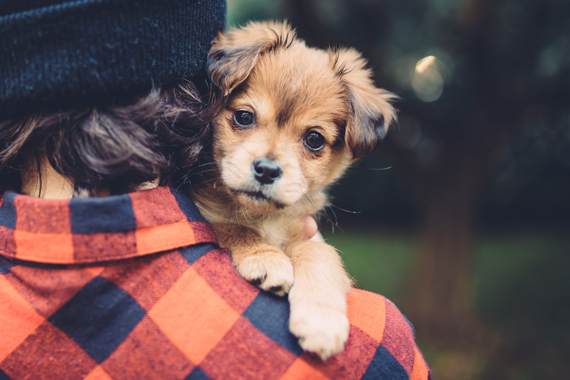With the new year approaching, there will be an abundance of cute new puppies. It is important to know the proper etiquette when it comes to socializing puppies. When thinking about aggressive dogs, one might first imagine a pit bull, rottweiler or german shepherd. But their bad reputations have come from a great deal of misinformation and hype being fed to the general public over the years.
Many people might be surprised to learn that members of these particular breeds aren’t amongst the most aggressive. Smaller dogs can be just as mean or overbearing as larger ones, it depends on many factors, including training and socialization techniques.
While any dog has the potential to be aggressive, according to their unique breed characteristics many canines can be unfriendly to unfamiliar dogs. This is one of the many reasons why it is so important to socialize your pet, especially when they’re at their youngest.
#1 – Start Young
Just like human children, those formidable years from infancy through becoming a toddler, are crucial to their psychological and social development. For dogs, there are two stages thought to be the most important time to begin socialization techniques. The first comes at 3-5 weeks of age and the second at 6-12 weeks.
Although the first time period is likely out of our control, it’s important for puppies to stay with their mother and other siblings during this important bonding and development stage. This is when these young dogs establish a “pecking order,” as the more dominant one steps up as a “leader of the pack” and the more submissive dogs will follow.
#2 – Picking Your Puppy
If you’re choosing a puppy and you’re able to see them with their litter-mates, you’ll likely be able to tell who is, in fact, the leader of the pack. If this will be your only dog, the strongest of the bunch be likely be more outgoing and playful. On the other hand, if you’re adding another dog to your family, you should look for one that is more on the submissive side. Conversely, many people prefer the runt of the litter and believe them to have the potential for the most personality.
#3 – People Pleasing
Puppies are naturally curious and are likely to warm up to just about anyone, but if they do shy away from a new person in your home, politely ask your guest to take a seat and ignore the animal completely. Trying to force an instant bond is not the route to take in this particular situation. Instead, give the dog some space and let them make the first move, on their own terms and time schedule … they’ll come around … literally.
#4 – Other Dogs
Your best bet for a good first encounter with another dog is with an older female, especially one who has given birth in the past. They’re much more likely to be accepting and affectionate with your youngster. When you do put another animal in the presence of your pup, begin by holding your dog and letting them view the newcomer from a distance at first.
When they begin to interact, stay close, but only intervene if there’s trouble brewing. Dogs will naturally explore each other with plenty of sniffing and could begin to play. Again, only step in if there is aggressive growling or biting, but even a few little nips are safe.
#5 – Other Animals
If possible, try to introduce your puppy to many different breeds and types of other animals, especially cats. They’ll learn that other animals are their friends and not prey, which means they’ll be less likely to chase felines in the future. If you don’t have a cat, see if you can borrow one from a friend or family member who may have one that’s already dog-friendly.
#6 – Children
Start with older children who know how to behave around dogs and work your way down to the younger brood. If you have children of your own, teach them how to behave around animals and be sure they understand they shouldn’t assume puppies want to play 24/7. Children should also know to let sleeping dogs lie and don’t bother them while they’re eating.
In closing, after the ice has been broken, so to speak, especially during this formative time, introduce your puppy to as many different kinds of people, sights and sounds as humanly possible. This will make them more confident and less fearful in the long run.

